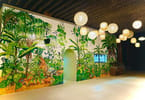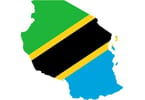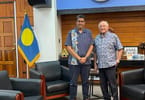The Olduvai Gorge Museum, largest Human History museum in the African
continent is set for grand, official opening by end next week.
Located inside the Ngorongoro Conservation Area in Northern Tanzania,
the museum is located adjacent to the archaeological site where the
first species hominid Zinjanthropus boisei Skull was discovered by Dr.
Mary Leakey on July 17, 1959 in Olduvai Gorge.
The museum to be the largest museum of its kind in Africa region will
open for public and scientific advancements of the early man history,
reports from Ngorongoro said.
It has built at the remote Olduvai Gorge site within the Ngorongoro
Conservation Area Authority (NCAA) and covers both the Olduvai and
Laetoli archaeological sites where the skull and footprints of the
first human being who lived millions of years were discovered.
Olduvai Gorge Museum is as well, comprises of five large buildings
housing the historical data room, laboratories, a restaurant and
visitors’ hall. The museum overlooks the legendary gorge which is
believed to have been a lake, many years ago.
The discovery of skull of the early man at Olduvai Gorge together with
the 3.6 million years oldest footprints at Laetoli had attracted
scientists from across the world to research the origin of man in the
ebe.
Olduvai Gorge is now known as The Cradle of Mankind while Laetoli
holds the only undisputable evidence for Human Bipedalism.
British archeologists, Dr. Louis Leakey and his wife Mary, who were
working in Kenya, discovered a humanoid skull with huge teeth that
they named Zinjanthropus.
The excellent condition of the skull allowed scientists to date the
beginnings of mankind to about two million years ago and to verify
that human evolution began not in Asia, as previously thought, but in
Africa. In keeping with the significance of this information, Olduvai
Gorge is now known as “The Cradle of Mankind.”
Zinjathropus was later named Australopithecus Boisei, after Charles
Boise who funded the Leakeys’ research. Two decades later, hominid
footprints were found at Laetoli, south of Olduvai, and were dated to
be older than 3.5 to 4 million years.
The Olduvai Gorge, which is located some 250 kilometers west of
northern Tanzania’s tourist hub of Arusha and roughly between the
Ngorongoro crater and Serengeti national park, attracts about 60,000
visitors a year, most of them researchers and students from across the
ụwa.
Known as the “Last Garden of Eden,” Ngorongoro Conservation Area (NCA)
in northern Tanzania’s tourist circuit has been seriously encroached
by nomadic Maasai herdsmen looking for green livestock pastures inside
the wildlife-populated and conserved land.
NCA was established in 1959 and was the working home for its founder
and famous German zoologist, Dr. Bernhard Grzimeck, and his son
Michael who together filmed the entire and modern conservation area
and produced the thrilling wildlife film and a book “Serengeti Shall
Never Die.”
The area supports high densities of wildlife throughout the year and
contains the most visible population of the remaining black rhino in
Tanzania. The NCA has over 25,000 large mammal including the black
rhinos, elephants, wildebeests, hippos, zebras, giraffes, buffaloes,
gazelles, and lions.
The crater is steep, 600 meters in depth, made by high natural walls
that survived the volcano’s subsidence or caldera. It covers 264
square kilometers, making it one of the largest, intact, and unflooded
calderas in the world.
IHE Ị GA-Ewepụ na edemede a:
- scientists from across the world to research the origin of man in the.
- The discovery of skull of the early man at Olduvai Gorge together with.
- The museum to be the largest museum of its kind in Africa region will.






















